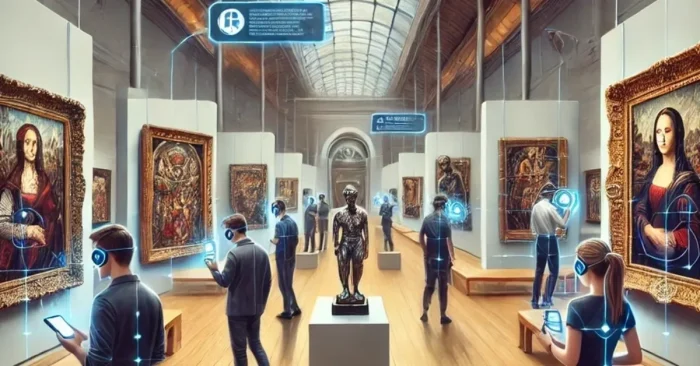Overview
AI tools for museum exhibits are revolutionizing the way cultural heritage, art, and history are presented to the public. By combining artificial intelligence with interactive technologies, museums can create engaging, personalized, and educational visitor experiences. AI analyzes visitor preferences, behaviors, and demographics to tailor exhibit content in real-time. It also powers virtual guides, augmented reality displays, and interactive storytelling that bring artifacts to life. Furthermore, AI helps in artifact recognition, translation of exhibit information, and preservation of fragile items through digital replicas. These innovations not only enhance visitor learning but also attract broader and more diverse audiences worldwide.
1. AI in Personalized Visitor Experiences
AI tools analyze visitor behavior, such as time spent at exhibits or interaction with displays, to provide tailored recommendations. Personalized audio guides or mobile apps suggest exhibits based on interests, creating a custom museum journey. This makes visits more meaningful and engaging for each individual.
2. AI-Powered Virtual Guides
Many museums now use AI chatbots or holographic assistants as guides. These tools answer visitor questions, provide historical context, and adapt responses based on user queries. Virtual guides make learning more interactive and accessible for people of all ages and backgrounds.
3. AI in Artifact Recognition & Information
With AI-powered image recognition, visitors can scan artifacts using mobile apps to instantly access detailed information, stories, or 3D models. This eliminates the need for lengthy labels and allows for multilingual accessibility, making exhibits more inclusive for international visitors.
4. AI for Augmented Reality Exhibits
AI enhances augmented reality (AR) by overlaying digital information on physical artifacts. Visitors can view reconstructions of ancient ruins, see paintings restored to their original colors, or explore 3D models of fragile artifacts. This immersive approach brings history and art to life.
5. AI in Interactive Storytelling
Museums use AI-driven storytelling platforms that adapt narratives based on visitor engagement. For example, children may hear simplified stories, while researchers receive detailed explanations. This flexibility makes exhibits engaging for diverse audiences with varying knowledge levels.
6. AI for Multilingual Support
AI translation tools provide real-time multilingual exhibit information through apps or audio guides. This removes language barriers, allowing global visitors to access content in their preferred language. It fosters inclusivity and broadens the museum’s reach to international audiences.
7. AI in Visitor Data Analytics
Museums leverage AI to track visitor flow, popular exhibits, and engagement levels. This data helps curators design better exhibit layouts, optimize crowd management, and improve educational strategies. Data-driven insights ensure exhibitions meet visitor needs effectively.
8. AI for Preservation & Conservation
AI helps monitor the condition of artifacts by detecting changes in humidity, temperature, or light exposure. Predictive analytics warn curators of potential risks, ensuring timely preservation efforts. AI also creates digital replicas for long-term conservation and virtual exhibitions.
9. AI in Virtual & Remote Exhibitions
With AI, museums offer online tours and virtual exhibits accessible worldwide. AI curates personalized digital journeys, allowing people unable to visit physically to experience collections. This expands accessibility and engages global audiences beyond museum walls.
10. AI for Accessibility & Inclusion
AI-driven accessibility tools support visitors with disabilities by providing voice assistance, descriptive audio for the visually impaired, and gesture recognition for those with mobility challenges. This ensures museums are inclusive, offering equal learning opportunities to everyone.
(FAQs)
Q1: Do AI tools replace human museum guides?
No, AI enhances visitor experiences but human guides remain essential for personal interaction and cultural storytelling.
Q2: Are AI-powered museum tools expensive?
Costs vary, but many museums adopt scalable AI solutions such as mobile apps or AR exhibits within budget limits.
Q3: Can AI museum exhibits work offline?
Yes, some AI tools, like AR displays and offline apps, function without internet, though cloud-based features need connectivity.
Learn More About AI Course https://buhave.com/courses/learn/ai/
















